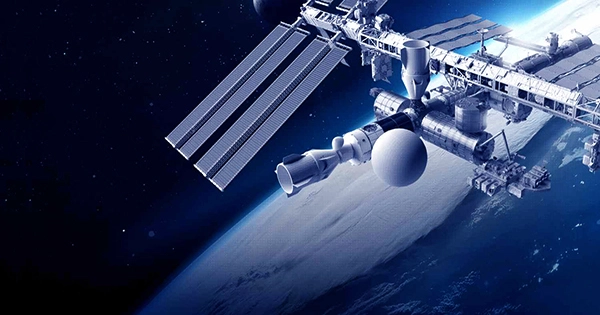WASHINGTON — According to NASA’s inspector general, the organization has to improve its ability to plan international collaborations for its Artemis lunar exploration program and get beyond challenges like export control.
Artemis, which NASA can utilize to lower the overall cost of the project to return humans to the moon, has received substantial worldwide interest, according to a study from the Office of Inspector General (OIG) of NASA, which was released on January 17. The 23 governments that have ratified the Artemis Accords detailing best practices for sustainable space exploration, they claimed, are evidence of this interest, as are the contributions that nations are giving to Artemis missions.
According to the paper, “NASA’s Artemis program has received great attention from space organizations throughout the world given the scientific and exploration possibilities that the Moon and Mars possess.” It stated that as of October 2022, 54 agreements pertaining to Artemis had been signed between NASA and other space agencies and governments. The remaining 23 were with 14 other nations, while the other 23 were with the European Space Agency and the Japanese Space Agency.

The report said, however, that there was no “overarching strategy” in place to manage requirements and expectations and that coordination of such agreements was done on an as-needed basis. The OIG reported that “the absence of a coordinated approach makes it difficult for NASA to manage expectations regarding an international partner’s prospective contribution and generates uncertainty as to what they should provide.”
The paper compared that administration to the International Space Station program, which is overseen by an intergovernmental agreement (IGA) and includes a thorough structure of panels and boards to coordinate the duties of the international participants. Both NASA and partners believe that this arrangement cannot be expanded to cover new Artemis activities, even though the space station IGA is being utilized to oversee contributions to the lunar Gateway.
Export control is one of the main issues that the report highlights as preventing international collaboration. According to the OIG, U.S. export regulations “often limit NASA’s Artemis collaborations with international partners and prevent future collaborations.”
One illustration is that, unless specifically assigned to a mission, export control laws make it challenging for astronauts from NASA partners to take part in Artemis-related projects. Even though Gateway is a global initiative with Japanese contributions, the report claimed that JAXA has not sent an astronaut to the Johnson Space Center to train for Gateway missions due to a lack of data access.
The Export Administration Regulation (EAR), which is supervised by the Commerce Department, and the more stringent International Traffic in Arms Regulation (ITAR), which is controlled by the State Department, are both complex webs of export control laws that NASA must navigate. In one instance, the Orion spacecraft’s European Service Module and the adapter that connects it to the crew module are both classed individually as EAR items. However, the hardware is subject to ITAR when the service module and adapter are coupled.
Despite these obstacles, the OIG report determined that foreign cooperation on Artemis had cost advantages, citing a study by the Aerospace Corporation that discovered that projects run by NASA that included international contributions had less cost growth than those that did not.
The analysis found that only 6% of the expenses of the first three Artemis missions will be borne by international partners, compared to 25% of the costs to operate the U.S. component of the ISS, and that NASA should take greater advantage of cost-sharing. “More effective international partner engagement and cost management techniques would better position NASA to meet its long-term Artemis objectives,” according to the current budget profile of NASA, which projects Artemis expenses of $93 billion between fiscal years 2012 and 2025.
The paper offered NASA ten suggestions on how to enhance communication with international partners on Artemis, including alterations to export regulations. All but one of them were accepted by NASA, who responded in the report that the overall Artemis effort was not “bounded in such a way to accommodate conducting a defensible cost estimate on a multi-decade campaign,” calling for “a detailed gap analysis and cost estimate” for missions beyond Artemis 4.
The OIG report was made public on the same day that the NASA Advisory Council met; the council lists international cooperation as one of its “major emphasis areas.” At the meeting, committee members avoided discussing the findings and instead commended NASA for its efforts to enlist foreign partners in Artemis.
The greatest coalition of space partners in history is what Kay Bailey Hutchison, a former senator and American ambassador to NATO, said of Artemis’ objective. “That will become a reality as a result of all the effort that is being done.”
UAE Gateway role: The OIG report also seems to obliquely affirm the United Arab Emirates’ participation in the lunar Gateway. Officials from NASA have been claiming for months that they are in talks with an undisclosed nation to supply an airlock module for the Gateway, which was initially supposed to come from Russia but that nation decided not to take part in the initiative.
Boeing was reportedly “actively working” with the UAE government on the design of an airlock for the Gateway, according to a story from The National, a UAE daily, in December. Both NASA and the UAE government declined to confirm those conversations.
According to the OIG investigation, NASA was negotiating with an unidentified “international partner” to supply an airlock module for the Gateway, which is scheduled to launch in the late 2020s. The UAE Space Agency is listed as providing “possible contributions” to the Gateway in a table in the report that lists several international relationships, a title that is not granted to any other agency. The UAE Space Agency identified “airlock manufacture” as a developing capability in the report’s appendix.















